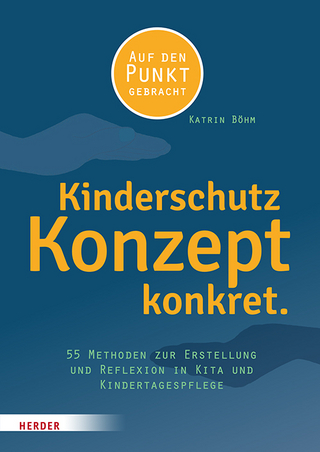
Instructional Design with Emerging Technologies
Routledge (Verlag)
978-1-032-67193-2 (ISBN)
- Lieferbar (Termin unbekannt)
- Versandkostenfrei innerhalb Deutschlands
- Auch auf Rechnung
- Verfügbarkeit in der Filiale vor Ort prüfen
- Artikel merken
Bridging the gap between instructional design (ID) theory and practice in today's technology-enhanced learning environments, the book extends the current understanding of instructional science with an up-to-date perspective on emerging technologies and their affordances for teaching and learning.
Positioning ID as a systematic process informed by theoretical assumptions, empirical evidence, and pragmatic considerations, this book provides an in-depth description and reflective analysis of good practice in technology-enhanced learning and design with a tripartite framework of pedagogy, technology, and evidence. It covers well-established ID theories and models with real-life examples of their effective integration with technological innovations. The book aims to advance the understanding of ID from both pedagogical and technological perspectives to improve educational practice and theory development in the information age.
The book will be of interest to students and academics in educational technology, instructional science, and instructional design, as well as instructional designers and teachers.
Heng Luo is an associate professor at Faculty of Artificial Intelligence in Education from Central China Normal University. His research work focuses on the effective integration of learning sciences, instructional design, and AI technologies to promote quality and equity of education in diverse contexts, leading to over 40 publications in SCI/SSCI journals.
Unit 1: Instructional Design in the Information Age 1: What is instructional design and how is it evolving? 2: Perspectives on theories, technology, practice, and research Unit 2: Useful Theories in Learning and Instruction 3: Behaviorist views of learning and learning analytics 4: Case method to promote meaningful learning experiences 5: Inquiry-based learning and interdisciplinary teaching (PjBL, STEM, and maker) 6: Computer-supported collaborative learning: a social-constructivist approach Unit 3: Emerging Technologies for Education 7: Educational data mining 8: Multimodal learning analytics 9: Mixed reality 10: Artificial intelligence generated content (AIGC) Unit 4: Research Methods for Instructional Design and Technology 11: Quantitative methods 12: Qualitative methods 13: Design-based research Unit 5: Reflections and Future Direction 14: Essential competencies for instructional design practitioners and researchers 15: What have we learned in the past, and what to do in the future?
| Erscheinungsdatum | 18.09.2024 |
|---|---|
| Zusatzinfo | 4 Tables, black and white; 4 Line drawings, black and white; 3 Halftones, black and white; 7 Illustrations, black and white |
| Verlagsort | London |
| Sprache | englisch |
| Maße | 156 x 234 mm |
| Gewicht | 570 g |
| Themenwelt | Sozialwissenschaften ► Pädagogik ► Schulpädagogik / Grundschule |
| Sozialwissenschaften ► Pädagogik ► Schulpädagogik / Sekundarstufe I+II | |
| ISBN-10 | 1-032-67193-9 / 1032671939 |
| ISBN-13 | 978-1-032-67193-2 / 9781032671932 |
| Zustand | Neuware |
| Informationen gemäß Produktsicherheitsverordnung (GPSR) | |
| Haben Sie eine Frage zum Produkt? |
aus dem Bereich


